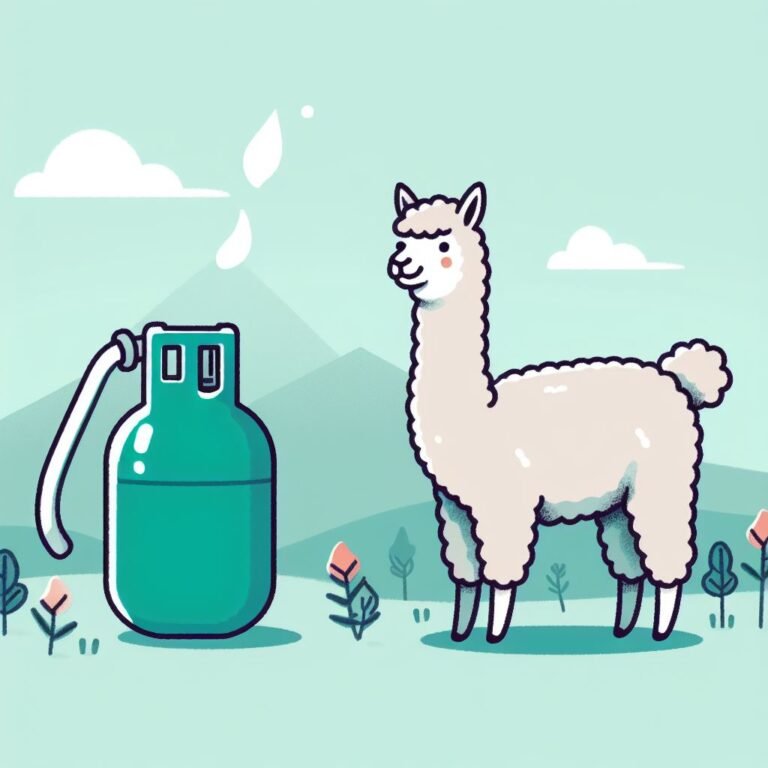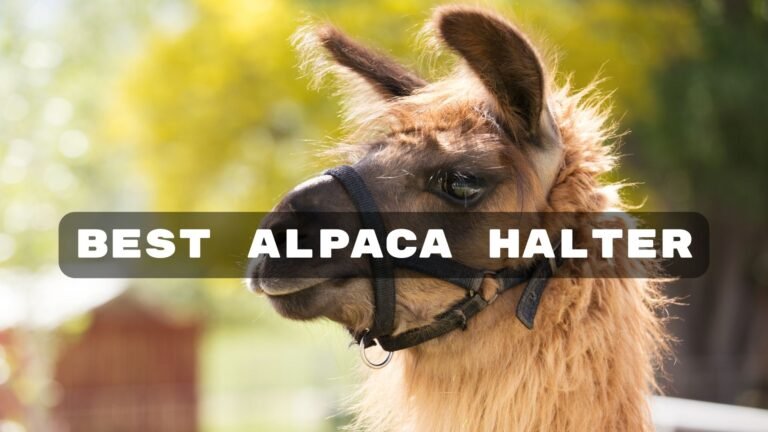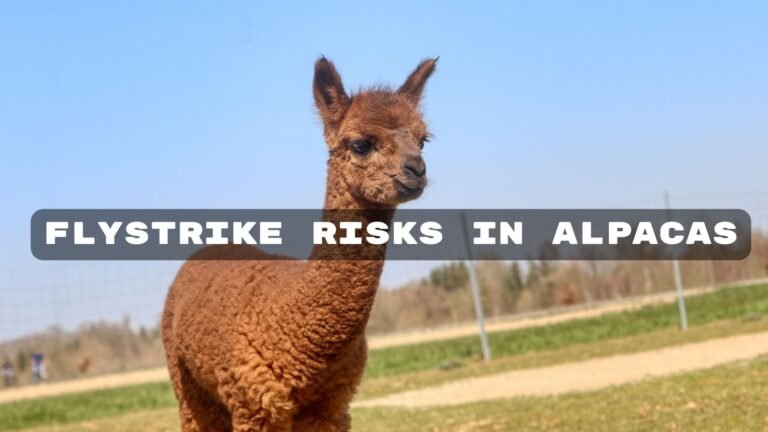Why Do Alpacas Exhibit Unique Herd Behaviors?
You’ll notice alpacas have unique herd behaviors because they rely heavily on social structure and clear hierarchies led by an alpha male. Their gentle vocalizations and body language keep the group connected, while genetics and environment shape individual personalities. Isolation or disrupting their social balance causes stress and agitation. When you understand how their social bonds, communication, and leadership work together, you’ll gain deeper insight into why these fascinating animals behave the way they do.
Key Takeaways
- Alpacas form clear social hierarchies led by an alpha male, shaping group behavior and reducing conflicts within the herd.
- Their communication includes humming, spitting, and ear positioning to express emotions and maintain social bonds.
- Social norms and learned behaviors from the herd influence individual alpaca personalities and interactions.
- Isolation or disruption of the herd causes significant stress, highlighting the importance of stable social environments.
- Genetics and environment together shape temperament, affecting how alpacas respond to training and herd dynamics.
Social Structure and Hierarchy in Alpaca Herds

When you observe an alpaca herd, you’ll notice a clear social hierarchy led by an alpha male who guides the group’s behavior. This leader sets behavioral cues that influence the herd mentality, helping maintain order and reducing stress among members. Each alpaca has a defined role, contributing to the herd’s social dynamics, which supports their security and wellbeing. Adult males and females are kept separately to prevent conflicts and protect females during mating, as disrupting this balance can cause agitation. If an alpaca is segregated from its herd, it becomes stressed due to the loss of social structure. Understanding these social norms and hierarchy is essential for managing alpacas effectively, as any change can lead to behavioral problems and health issues within the herd.
Communication Methods Among Alpacas
Alpacas rely on several distinct communication methods to interact within their herd. As herd animals, they use a mix of sounds and body language to convey feelings and maintain group cohesion. You’ll notice their gentle humming varies in pitch and intensity, signaling curiosity, contentment, or concern. Their body language—ear positions, tail stances, and neck postures—communicates emotions clearly. Here are key communication methods alpacas use:
- Gentle humming for emotional expression
- Sharp calls to alert the herd of threats
- Pinned-back ears indicating annoyance
- Social grooming to build trust and calmness
- Spitting to set boundaries and show displeasure
Understanding these communication methods helps you appreciate how alpacas maintain strong social bonds and navigate their complex herd dynamics.
The Role of Alpha Alpacas in Herd Dynamics
Although herds consist of many members, the alpha alpaca holds a pivotal role in maintaining order and stability. As the dominant adult male, the alpha alpaca establishes a clear social hierarchy that shapes herd dynamics. You’ll notice that other alpacas defer to the alpha’s decisions, influencing feeding patterns, grooming, and breeding success. This leadership reduces conflicts and stress within the group, making interactions smoother. If the alpha alpaca is removed or replaced, herd dynamics can quickly shift, causing agitation and forcing the group to reorganize its social structure. Understanding the alpha’s role helps you manage your alpacas better by recognizing behavioral issues linked to changes in this social hierarchy, ensuring a balanced and peaceful herd environment.
Importance of Herd Size for Alpaca Well-being

You might not realize it, but alpacas need at least three members in their herd to form a proper social hierarchy. This structure is essential because it helps reduce stress and keeps them healthy. Without enough companions, their well-being can quickly decline.
Minimum Three Alpacas
When you keep fewer than three alpacas, their natural social hierarchy can’t form properly, which increases stress and affects their well-being. Alpacas are herd animals, and having at least three individuals is essential to meet their emotional needs. This minimum herd size allows them to engage in natural social behaviors that reduce loneliness and promote mental health.
Consider these points about maintaining a herd of three or more alpacas:
- Supports emotional health by preventing isolation
- Enables natural interaction within the herd
- Reduces stress-related illnesses
- Maintains stability in social roles
- Facilitates effective herd management
Social Hierarchy Formation
Because alpacas rely heavily on social structures, having at least three individuals is essential to form a stable hierarchy that supports their well-being. On alpaca farms, this social hierarchy organizes individual alpacas into roles like leaders, followers, guards, and babysitters, which helps maintain order and reduces stress. When the herd size is sufficient, each alpaca knows its position, minimizing conflicts and promoting safety. You’ll find that disrupting this balance—like introducing new members without care—can cause agitation among the animals. Also, adult males and females must be housed separately to prevent health risks. So, by maintaining a well-structured social hierarchy with enough individual alpacas, you’re ensuring their emotional and physical health thrives within the herd.
Behavioral Traits Influenced by Genetics and Environment

You’ll notice that an alpaca’s personality isn’t just random—it’s shaped by both genetics and their surroundings. Some traits, like stubbornness or friendliness, can run in families, while a caring environment helps them develop positive behaviors. Understanding this mix can help you better appreciate how alpacas interact within their herds.
Genetic Personality Traits
Although genetics play a major role in shaping an alpaca’s personality, environmental factors also influence their behavior. You’ll find that genetic personality traits determine many behavioral traits, such as stubbornness or docility, passed down through lineage. These inherited traits affect how alpacas interact within the herd and respond to training. In herd management, understanding these genetic influences helps you predict social dynamics and tailor care effectively. Consider these key points:
- Genetic background shapes individual temperament, from introverted to extroverted.
- Certain lines may be more responsive or resistant to human interaction.
- Behavioral traits impact social hierarchy and bonding.
- Genetic predispositions influence training outcomes.
- Awareness of these traits aids in managing herd cohesion and welfare.
Recognizing genetic personality traits is essential for successful herd management.
Environmental Behavior Shaping
When you observe alpacas, you’ll notice their herd behaviors aren’t just inherited—they’re also shaped by their surroundings. Alpaca behavior results from a mix of genetic traits and environmental factors. For example, the presence of humans and the type of socialization an alpaca experiences can alter how it interacts within the herd. These environmental factors influence social interactions, leading to unique relationships like friendships or rivalries. Additionally, alpacas learn social norms from their herd, adapting their behavior based on immediate group dynamics. So, while genetics set a foundation, it’s the environment that fine-tunes each alpaca’s behavior, making their social patterns both flexible and distinct. Understanding this helps you appreciate how nature and nurture together shape these fascinating creatures.
Impact of Human Interaction on Alpaca Behavior
Because alpacas are naturally social animals, your interactions with them can shape their behavior considerably over time. Positive human interaction builds trust, helping alpacas respond better to your cues and commands. When you handle them gently and consistently, alpacas become calmer and more cooperative, which benefits the entire herd’s social dynamics. You’ll notice they can learn to associate specific verbal commands with actions, making training easier. Plus, familiar human presence reduces stress during stressful times like birthing or introducing new alpacas.
Key impacts of human interaction on alpacas include:
Key impacts of human interaction on alpacas include trust, improved responsiveness, trainability, reduced stress, and stronger bonds.
- Enhanced trust and reduced fear
- Improved responsiveness to verbal and non-verbal cues
- Increased trainability and cooperation
- Lower stress levels in challenging situations
- Stronger bonds promoting overall herd health
Social Bonds: Friendships and Rivalries Within the Herd
While alpacas are known for their gentle nature, their social lives are rich with friendships and rivalries that shape the herd’s dynamics. You’ll notice that alpacas often form strong social bonds, especially with those of similar color, like Chase and Sherry Ann before they were weaned. These friendships are essential for their emotional well-being; when Sherry Ann lost her companion, she experienced noticeable distress. On the flip side, rivalries also exist, such as the ongoing conflicts between half-sisters Nibbler and Amara, which can disrupt group harmony. Understanding these social bonds and rivalries is key when managing a herd, as they directly influence behavior and health. So, keeping alpacas connected with their preferred companions helps maintain a balanced, healthy group.
Stress Factors Related to Isolation and Segregation
When alpacas are separated from their herd, you’ll notice their stress levels rise quickly due to disrupted social bonds. Isolation can lead to emotional distress, causing significant changes in their behavior and health. Understanding these effects is key to keeping your alpacas happy and healthy.
Effects of Herd Separation
If alpacas don’t have at least two companions, they can quickly become stressed and even physically ill. As herd animals, alpacas rely heavily on companionship for their mental and physical health. Separation from their herd disrupts social roles and hierarchy, causing agitation and behavioral changes. Without proper integration, new alpacas might face isolation within the group, increasing stress levels. You need to watch for subtle behavioral cues that signal distress early on.
Key effects of herd separation include:
- Increased stress and anxiety
- Disruption of social hierarchy
- Behavioral changes like agitation
- Physical health decline from prolonged isolation
- Difficulties in herd integration for newcomers
Recognizing these signs helps maintain your alpacas’ well-being and reinforces the importance of keeping them in a stable social environment.
Emotional Impact of Isolation
Understanding the effects of herd separation naturally leads to exploring how isolation impacts an alpaca’s emotions. When an alpaca is isolated, the emotional impact is profound. Loneliness isn’t just sadness—it triggers stress that can quickly lead to health deterioration. Since alpacas thrive in groups of at least three, being alone disrupts their social balance, causing agitation and behavioral changes. You’d notice an isolated alpaca withdrawing or eating less, clear signs of distress. This isn’t just uncomfortable for them; it can become life-threatening if not addressed. Fortunately, introducing new companions promptly can reverse these effects, restoring their wellbeing. So, the emotional health of alpacas is tightly linked to their social environment—without it, loneliness can severely undermine their physical and mental state.
Training and Socialization Effects on Herd Cohesion
Although alpacas naturally form social bonds, positive human interaction and consistent training play an essential role in enhancing their behavior and strengthening herd cohesion. When you engage in regular handling and socialization, alpacas adapt better to their roles within the herd, reducing stress and fostering stability. Training using verbal commands and positive reinforcement helps modify their interactions, promoting harmony and minimizing conflicts. Understanding individual personalities during training allows you to tailor approaches, further improving herd dynamics. When introducing new alpacas, careful, gradual socialization prevents disruption and supports smooth integration. Key effects of training and socialization on herd cohesion include:
Consistent training and positive interaction enhance alpaca behavior, reducing stress and strengthening herd cohesion.
- Reduced stress through familiar handling
- Improved communication via training cues
- Enhanced social bonds among herd members
- Tailored approaches for individual needs
- Seamless integration of newcomers into the herd
Vocalizations and Their Significance in Alpaca Communication
Training and socialization help you build a stronger bond with your alpacas, but recognizing how they communicate with each other is just as important for maintaining herd harmony. Alpacas rely heavily on vocalizations, primarily gentle humming, to express emotions like curiosity, contentment, or concern. The pitch and intensity of these sounds give you clues about their feelings. Sharp, loud calls serve as alerts during danger, signaling the herd to stay vigilant. This vocal communication is closely tied to body language: pinned-back ears indicate annoyance, while a relaxed tail shows calmness. You’ll also notice clucking sounds, which often express friendly behavior or concern toward humans. Understanding these vocalizations and body language cues is essential for interpreting your alpacas’ needs and preserving peaceful herd interactions.
Frequently Asked Questions
What Unique Features Do Alpacas Have?
Imagine soft clouds grazing gently—alpacas’ wool quality feels just like that. You’ll notice their strong social bonds, creating calm herds, and unique grazing habits that keep the grass lush, making them truly special creatures.
What Are the Behavioral Adaptations of an Alpaca?
You’ll notice alpacas adapt through strong social structures, using communication signals like humming and body language to interact. Their protective instincts keep the herd safe, ensuring they thrive together by staying alert and bonded.
What Unique Features Do Alpacas Have Compared to Most Other Livestock?
You’ll find alpacas flaunt fine alpaca wool, a fascinating social structure, and flexible grazing habits. Their sophisticated social system and soft, sought-after fleece set them apart, making your experience with them truly unique and rewarding.
What Are Some Unique Behaviors of Llamas?
You’ll notice llamas use unique communication styles like humming and vocalizations, follow strict social structures with dominant leaders, and practice mutual grooming habits to strengthen bonds within their herd, showing strong social connections and care.








Our picks
Alpaca & Wool Felted Sole Inserts: Comfy Upgrade?
Best Alpaca Socks for Hiking: Ultimate Comfort and Durability on Trails
Best Alpaca Halter for Comfort and Control